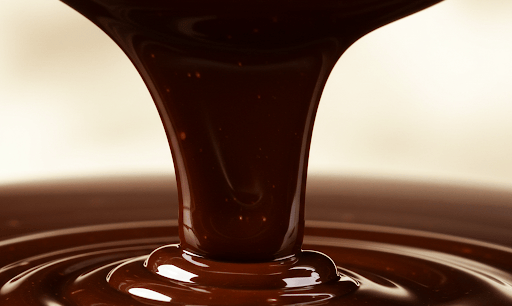Chocolate Alternative using Spent Grains: Innovation by Danish Startup
SUSTAINABILITYCONFECTIONARYMOST POPULAR


This is an AI generated illustration and does not represent actual product or service.
Chocolate is one of the world’s most beloved treats, but its production comes with significant environmental and ethical challenges. From the deforestation caused by cacao farming to the high carbon emissions associated with its global supply chain, traditional chocolate production is far from sustainable. Enter Endless Food Co, a Danish startup that has developed and filed a patent application (WO2025008472A1) on a revolutionary chocolate alternative under the brand THIC™ (This Isn’t Chocolate). This innovative product is made from spent grains, a byproduct of beer brewing and oat milk production, offering a sustainable, waste-reducing, and delicious alternative to conventional chocolate.
The Problem with Traditional Chocolate
Chocolate production is a complex, resource-intensive process that begins with cacao farming in tropical regions. The cacao beans undergo fermentation, drying, roasting, and grinding to produce cocoa mass and cocoa butter, the key ingredients in chocolate. However, this process has several drawbacks:
1. Environmental Impact: Cacao farming contributes to deforestation, biodiversity loss, and high carbon emissions due to long transportation routes.
2. Climate Vulnerability: Cacao trees are highly sensitive to climate change, leading to dwindling yields and rising prices.
3. Resource Intensity: The production process requires significant energy and water, further exacerbating its environmental footprint.
Endless Food Co’s THIC™ addresses these issues by eliminating the need for cacao altogether, instead using spent grains—a byproduct of beer brewing and oat milk production—to create a chocolate-like product with similar taste, texture, and functionality.
The Innovation: THIC™ Chocolate Alternative
THIC™ is a chocolate alternative product made from dried and milled spent grains, edible fats, and optional sugar. The spent grains, sourced from breweries and oat milk production, are a sustainable and abundant resource that would otherwise go to waste. The product is designed to mimic the sensory and functional properties of traditional chocolate, including its texture, melting properties, snap, and glossiness. Key Ingredients includes:
1. Spent Grains (10-40% by weight):
- Brewer’s Spent Grain (BSG): A byproduct of beer brewing, rich in protein, fiber, and nutrients.
- Oat Spent Grain: A byproduct of oat milk production, lighter in color and suitable for creating white chocolate-like products.
- The grains are dried to a moisture content of 12% or less and milled to a particle size of 40 microns or less for a smooth texture.
2. Edible Fats (20-60% by weight):
- Fats such as illipe fat, shea butter, and palm oil provide the melting properties and mouthfeel of chocolate.
- The fats are carefully selected to ensure the product is solid at room temperature but melts in the mouth.
3. Sugar (0-35% by weight):
- Optional sugar is added for sweetness and texture, with the amount adjustable based on the desired flavor profile.
4. Additional Ingredients:
- Cacao Husk: Adds a deep, chocolate-like flavor without using cocoa mass or butter.
- Blackened Spent Grains: Provides caramelized, roasted notes for a richer flavor.
- Flavoring Agents: Natural extracts like vanilla, fruit, and spices enhance the taste.
The Production Process
The method of producing THIC™ involves several key steps:
1. Drying and Milling: Spent grains are dried to reduce moisture and milled to a particle size of 60-500 microns.
2. Melting Fats: Edible fats are melted and mixed with the milled grains.
3. Conching: The mixture is conched (continuously mixed and ground) for 12-70 hours to achieve a smooth, homogeneous mass with a particle size of 40 microns or less.
4. Tempering and Cooling: The mixture is tempered to create a glossy finish and cooled to form solid chocolate-like bars or used directly as a liquid for coatings and fillings.
Benefits of THIC™
1. Sustainability: By using spent grains, THIC™ reduces food waste and eliminates the need for cacao farming, lowering its environmental impact.
2. Cost-Effectiveness: Spent grains are an affordable and abundant raw material, making THIC™ a cost-effective alternative to traditional chocolate.
3. Versatility: THIC™ can be used in a wide range of applications, including confectionery bars, coatings, syrups, baked goods, and beverages.
4. Nutritional Value: Spent grains are rich in protein and dietary fiber, adding nutritional benefits to the product.
5. Customizable Flavor: The use of natural flavoring agents and blackened grains allows for a variety of flavor profiles, from dark chocolate to caramelized white chocolate.
Applications of THIC™
THIC™ can be used in numerous food products, including:
- Confectionery: Bars, fillings, and coatings.
- Baked Goods: Cakes, cookies, biscuits, and doughnuts.
- Desserts: Mousses, ganaches, and ice creams.
- Beverages: Hot and cold chocolate drinks.
- Combination Products: Blended with traditional chocolate for hybrid products.
Endless Food Co’s THIC™ represents a shift in the confectionery industry, offering a sustainable, waste-reducing, and delicious alternative to traditional chocolate. By repurposing spent grains, the company not only addresses the environmental challenges of cacao farming but also creates a product that aligns with the growing demand for sustainable and innovative food solutions.
As consumers become increasingly conscious of the environmental impact of their food choices, THIC™ stands out as a promising example of how innovation can transform waste into value, offering a guilt-free indulgence for chocolate lovers worldwide.
